Along with other news, please follow: "Not only in Vietnam, airfares in countries around the world are high"; Official schedule of matches in the quarterfinals of the 2024 AFC U23 Championship ; AI detects 3 dangerous cancers with just one drop of dried blood; The tree species that blooms once every 100 years .
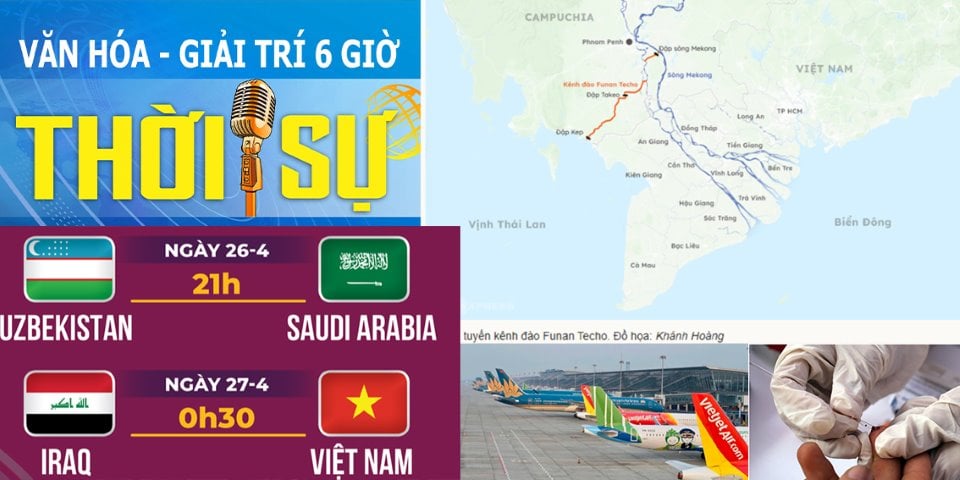
Funan Techo Canal Project Could Reduce Water Flow to West by 50%, Expert Says

Experts calculate that the Funan Techo canal that Cambodia is implementing will have a huge impact, causing the amount of water from the Mekong River to the West to decrease by 50%.
The information was given by Dr. Le Anh Tuan, Senior Lecturer of the Faculty of Environment and Natural Resources, Can Tho University, at a consultation conference on the proposal for Cambodia's Funan Techo Canal Project held in Can Tho on April 23.
According to Dr. Tuan, the canal project will flow through an area with about 1.6 million people living, creating a foundation for economic development for Cambodia. In the near future, the population in this area will increase thanks to urbanization on both sides of the canal and many commercial establishments and logistics services will also develop.
"Therefore, if fully calculated, adding the amount of water for daily life, industry and urban areas from this 1.7 billion USD project, the water on the Tien and Hau rivers (two tributaries of the Mekong River) reaching the Mekong Delta may decrease by about 50%. In dry years, the water shortage will be more severe," the expert said, adding that with the decline in water levels, the possibility of deeper saline intrusion could affect more than half of the cultivated area of the Mekong Delta in the future during the dry season and during high tides...
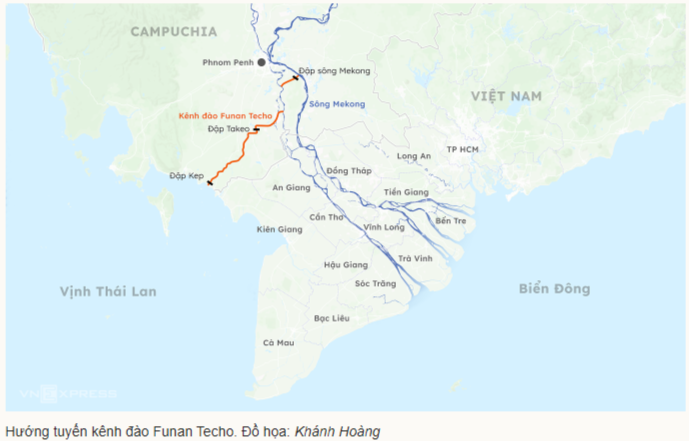
After approving the Funan Techo canal project on May 19, 2023, Cambodian authorities established an inter-ministerial committee to implement the 180-km project, with an estimated total cost of 1.7 billion USD.
According to plan, the canal will start construction at the end of this year and be operational in 2028, meaning a construction time of only 4 years.
"Not only in Vietnam, airfares in countries around the world are high"
According to the Global Trend Report provided by FCM Consulting (a multinational travel service provider), by the end of 2023, international economy class airfares increased by 17%-25% compared to 2019. Of which, Asia increased by 21%; Australia and New Zealand increased by 22%; Europe increased by 18%; South America increased by 25% and North America increased by 17%.
Mr. Subhas Menon, General Director of the Association of Asia-Pacific Airlines, said that not only in Vietnam but also in general, airfares are high everywhere in the world because prices depend on demand and supply.
Airlines face three main costs.
The first cost is the plane itself. Planes are already a very expensive item. On top of that, demand for planes has skyrocketed after borders reopened after the COVID-19 pandemic, causing demand for airfares to skyrocket.
For Vietnam and Asia, the reopening is much later. These markets are waiting to receive aircraft, so costs will of course increase because the supply of aircraft as well as the delivery schedule of spare parts and components of aircraft are delayed due to supply chain problems caused by geopolitical conflicts in the international market such as in Ukraine and Gaza.
If airlines do not get the planes they have ordered, the next option is to lease planes. The cost of leasing planes is also increasing, plus the rising global interest rates leading to an overall increase in operating costs, and that is one of the biggest factors.
Second is fuel. The price of gasoline before COVID-19 was $115/barrel and now fluctuates between $120-130/barrel. This is also a big cost for airlines.
Third, we need to attract back the human resources that have left the industry due to the COVID-19 pandemic. Wages are also increasing. All other costs including airport costs, route operating fees, etc. are increasing. Costs are the main factor affecting how quickly airlines can recover.
Official schedule of quarter-final matches of AFC U23 Championship 2024
The eight teams participating in the quarter-finals of the 2024 AFC U23 Championship include Qatar, Indonesia (Group A), South Korea, Japan (Group B), Iraq, Saudi Arabia (Group C), Uzbekistan and Vietnam (Group D).
Among the teams that passed the group stage of the U23 Asian Cup, U23 Indonesia is considered the "dark horse" of the tournament.
The Southeast Asian football representative entered the quarterfinals in the first time participating in this playground. Therefore, U23 Indonesia is also the team with the worst performance among the players present in the quarterfinals.
Specifically, of the 8 teams mentioned above, 5 teams have won the U23 Asian Championship, namely U23 Japan, Korea, Saudi Arabia, Iraq and Uzbekistan. The two U23 teams of Vietnam and Qatar are not bad either, with the best results being runner-up and third place respectively.
The quarter-final matches are Qatar - Japan (9:00 p.m., April 25), South Korea - Indonesia (0:30 a.m., April 26), Uzbekistan - Saudi Arabia (9:00 p.m., April 26), and Iraq - Vietnam (0:30 a.m., April 27).
In the quarterfinals, there are two evenly matched matches, with hosts Qatar facing Japan and Uzbekistan facing Saudi Arabia. Meanwhile, the match between South Korea and Indonesia is considered to be uneven.
However, U23 Korea must be very careful if they do not want to pay a high price. In the remaining match, U23 Iraq is better than Vietnam but the opportunity is still open for coach Hoang Anh Tuan and his team.
AI detects 3 dangerous cancers with just one drop of dried blood
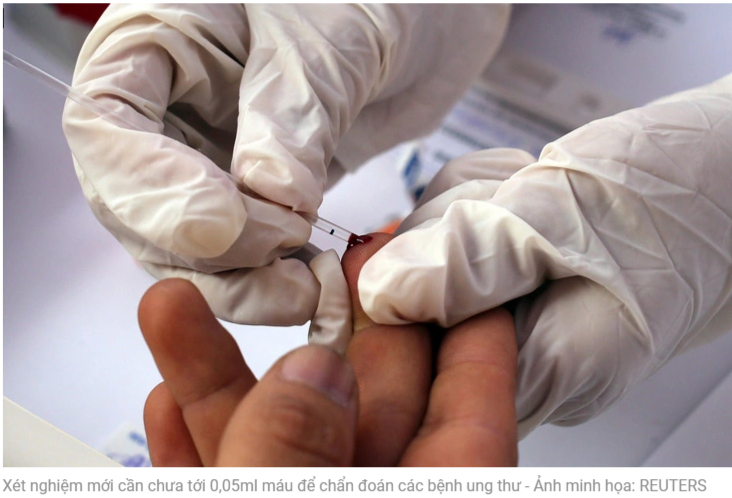
Initial tests by Chinese scientists show that with just a spot of dried blood, the tool can distinguish patients with pancreatic, stomach or colorectal cancer from healthy people within minutes.
The new tool uses machine learning, a branch of AI, to analyze metabolic byproducts, known as metabolites, in blood samples. These metabolites (found in serum) act as “biomarkers” that can potentially detect the presence of cancer in the body.
Screening for blood biomarkers has been proposed as a potential way to diagnose early-stage cancer when survival rates are higher and patients have no obvious symptoms.
The team of Chinese scientists said their new test would theoretically require less than 0.05ml of blood to diagnose the above cancers. The tool has also been shown to be able to accurately distinguish between cancer patients and healthy people.
At the same time, the study also showed that the dried blood test performed as well as the liquid blood test. In one of the team's trials, the dried blood test allowed them to detect 81.2% of pancreatic cancers, compared to 76.8% when using liquid blood samples.
The tree that blooms once every 100 years
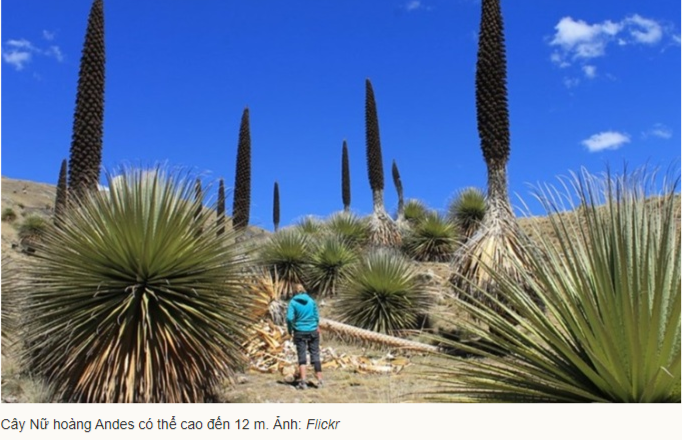
A 12-meter-tall Bromeliad tree in the Andes only blooms once a century.
A large, rarely flowering perennial called Puya raimondii dominates the Andes. Nicknamed the “Queen of the Andes,” this plant is a member of the Bromeliad family. While P. raimondii has similar thorns to pineapples, it is much taller. Its trunk can reach 12 meters in height, making it the largest bromeliad in the world, according to IFL Science .
P. raimondii was first described by French naturalist Alcide d'Orbigny in 1830. But it was not classified until 1874 when scientist Antonio Raimondi called it Pourretia gigantea. Later, in 1928, the plant was classified in the genus Puya and named in Raimondi's honor.
The nickname “Queen of the Andes” comes from the fact that P. raimondii is found in the Andes, the world’s longest continental mountain range. However, P. raimondii is endemic to the grasslands of Peru and Bolivia, at elevations of 3,000–4,000 m and facing north. Nearly half of all P. raimondii are concentrated in one place, Peru’s Titankayocc Regional Reserve, which is home to more than 450,000 plants. The remainder are scattered farther afield.
One of the features that makes the plant so impressive is its towering height, but some researchers suspect it may be sub-carnivorous. It may trap and kill animals but does not digest them. While further research is needed to prove this hypothesis, it seems likely. A closely related species, Puya chilensis , is also suspected of being sub-carnivorous and targets sheep.
P. raimondii can outlive many humans, with a lifespan of 80 to 100 years. It flowers only once in a century, at the end of its life. After blooming its white flowers and producing 6 to 12 million seeds, P. raimondii can maintain an upright position for several years after death.
Bao Nam synthesis
Source



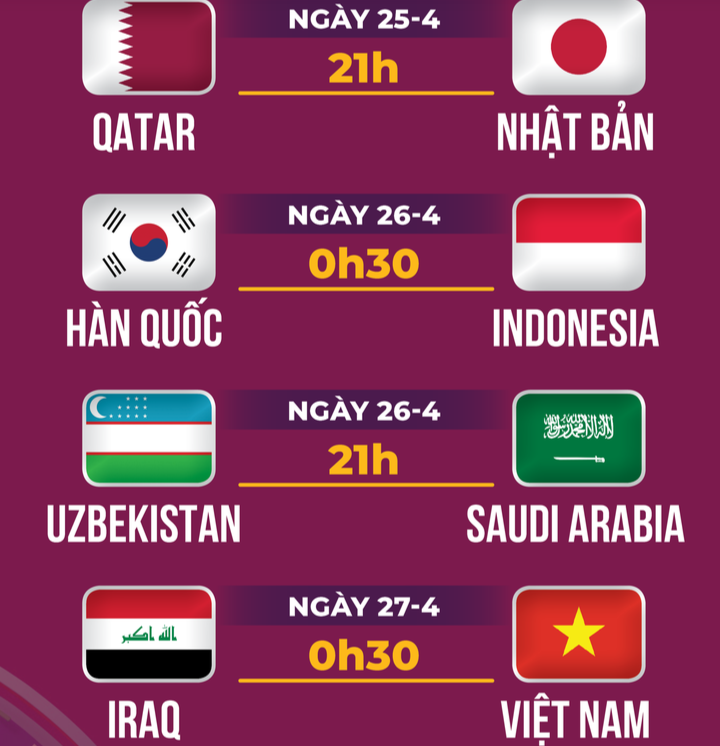










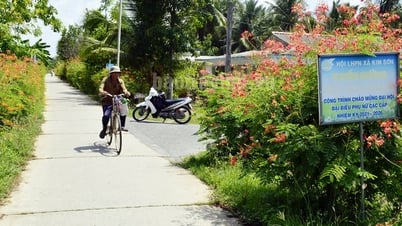


















































































Comment (0)